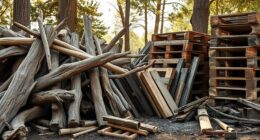As someone with extensive experience in installations, I can attest that installing a wood stove chimney may appear overwhelming at first. Nonetheless, with proper guidance and careful attention to detail, it can become a gratifying project.
In this article, I will walk you through the step-by-step process of finding the perfect location, selecting the appropriate chimney type, preparing the installation area, and ensuring proper ventilation and safety measures.
So, let’s dive in and demystify the art of installing a wood stove chimney!
Key Takeaways
- Determine optimal chimney height and clearance requirements
- Choose the proper chimney type based on fuel and local building codes
- Prepare the installation area by removing combustible materials and ensuring proper dimensions and clearance
- Follow manufacturer’s instructions for installing the wood stove and chimney pipe, and ensure proper ventilation and safety measures are taken.
Finding the Right Location
I’ve been researching the ideal location for the wood stove chimney, taking into consideration the measuring requirements and clearance regulations.
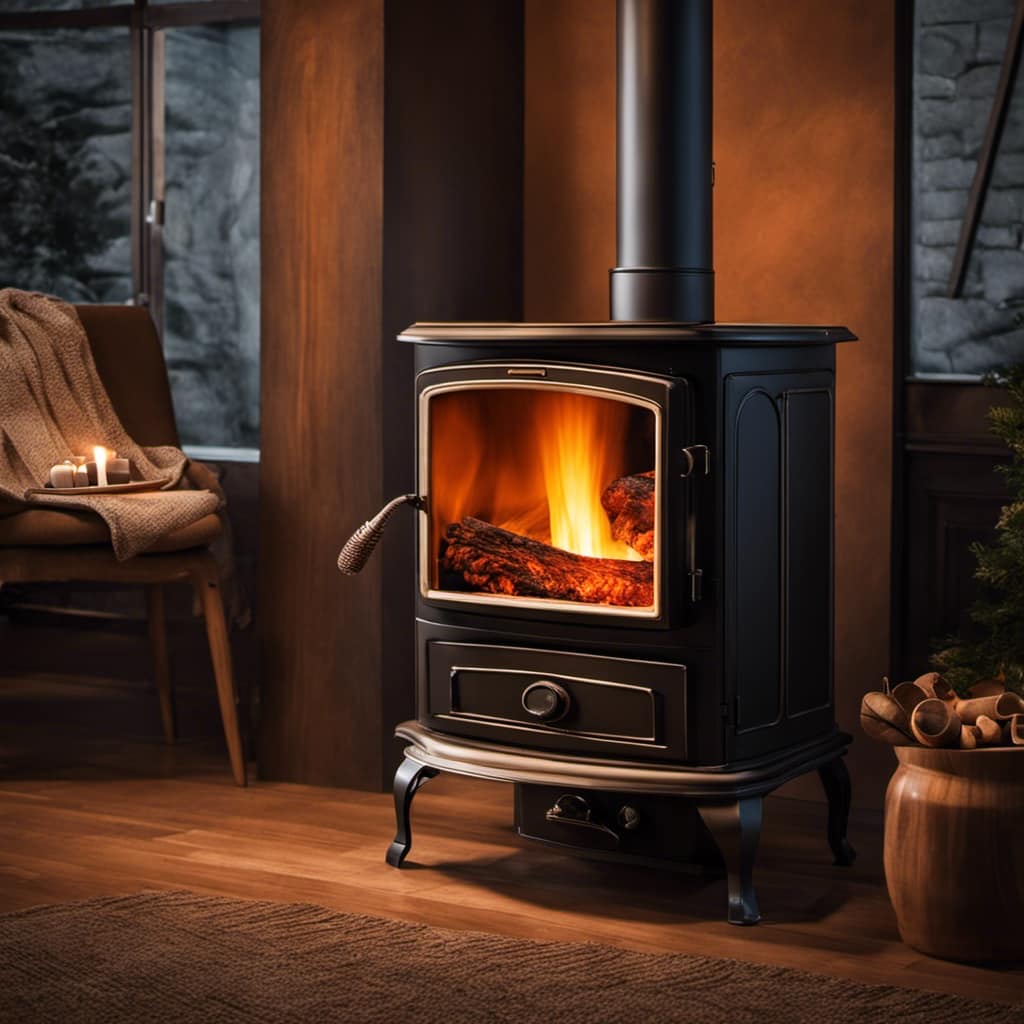
The first step in finding the right location is to determine the optimal height for the chimney. It should extend at least three feet above the highest point where it passes through the roof.
Next, you need to consider the distance between the stove and combustible materials. The clearance regulations state that the chimney must be at least 18 inches away from any combustible materials, such as walls or ceilings.
Additionally, you should ensure that the chimney is placed away from any windows or doors to prevent smoke from entering the house.
Once you’ve determined the proper location, you can move on to choosing the proper chimney type.
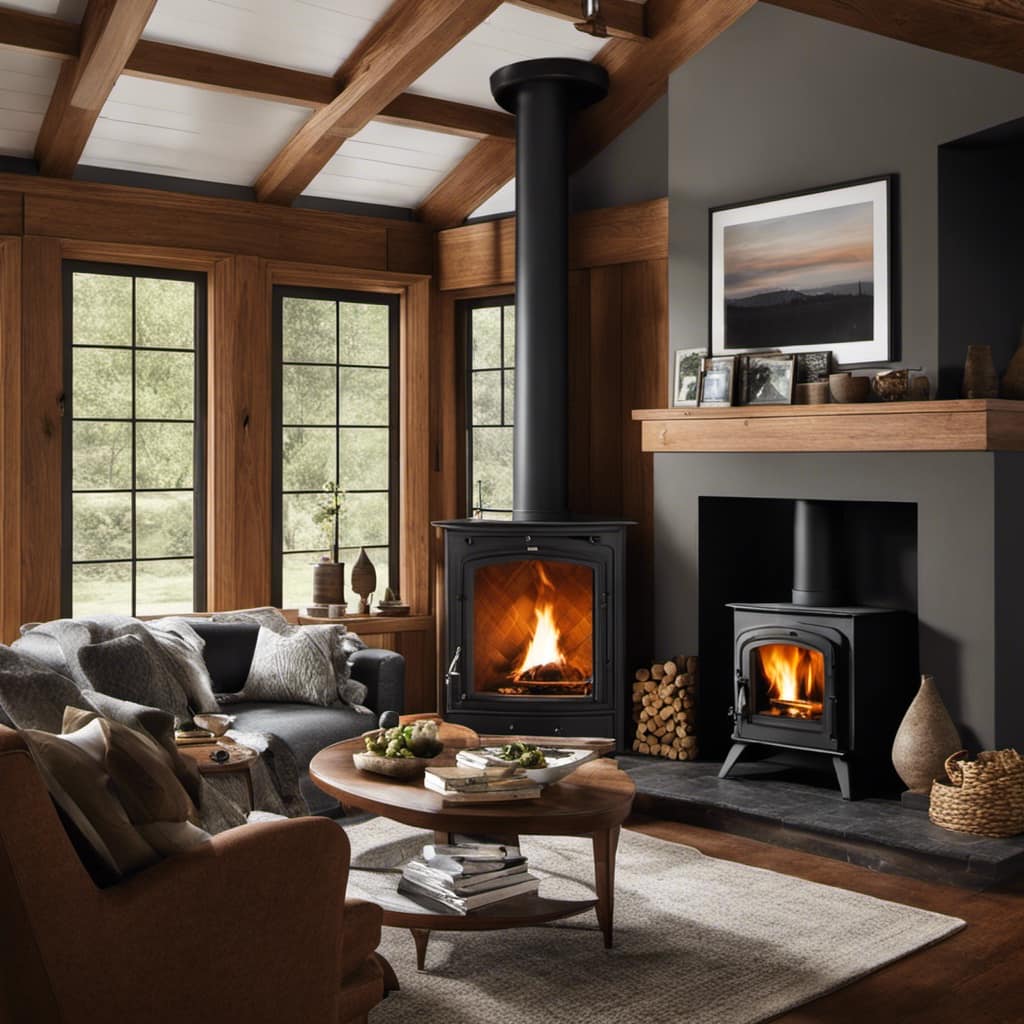
Choosing the Proper Chimney Type
When selecting the appropriate chimney type, it’s important to consider factors such as the type of fuel being used and the specific requirements of the wood stove. One of the key considerations is the chimney height. The chimney should extend above the roofline to ensure proper draft and prevent smoke from entering the living space. The height requirement may vary depending on local building codes, so it’s crucial to check these regulations before proceeding with the installation.
Chimney insulation is another important factor to consider. Insulating the chimney helps to prevent heat loss and improve the efficiency of the wood stove. Insulation materials such as ceramic fiber or vermiculite can be used to line the chimney, ensuring that the heat is retained within the system.
With the appropriate chimney type, height, and insulation, the wood stove installation can proceed smoothly, ensuring safe and efficient operation. Now, let’s move on to preparing the installation area.
Preparing the Installation Area
Before starting the installation process, it’s essential to ensure that the area is properly prepared. Here are the steps I followed to prepare the installation area for my wood stove and chimney:
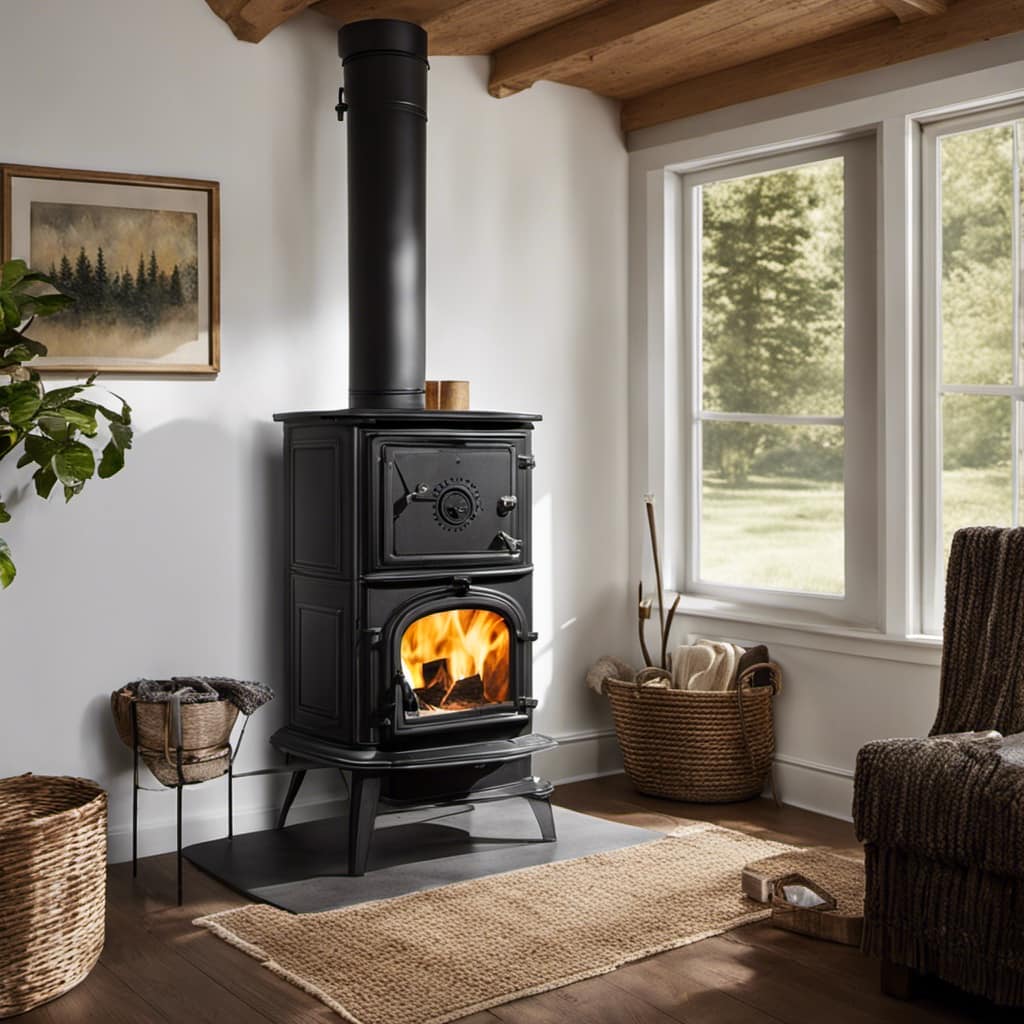
-
Clearing debris:
-
Remove any furniture, combustible materials, or flammable objects from the area.
-
Sweep and clean the floor to remove any dust or debris that could potentially ignite.
-
Measuring space:
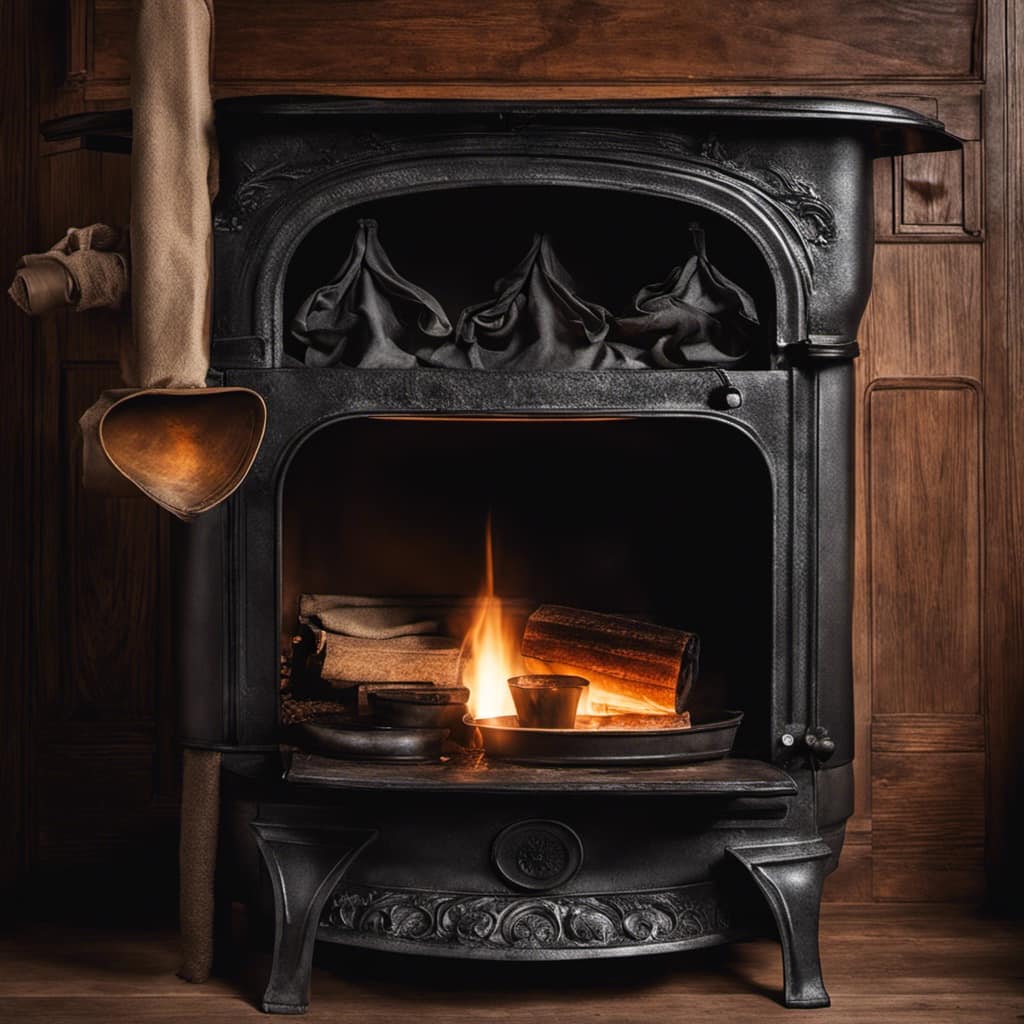
-
Measure the dimensions of the wood stove and chimney pipe to ensure they’ll fit in the designated area.
-
Make sure there’s enough clearance around the stove to meet safety regulations and prevent fire hazards.
By clearing debris and measuring the space accurately, I was able to create a safe and suitable environment for installing the wood stove and chimney pipe.
Now, let’s move on to the next section where I’ll explain the installation process in detail.
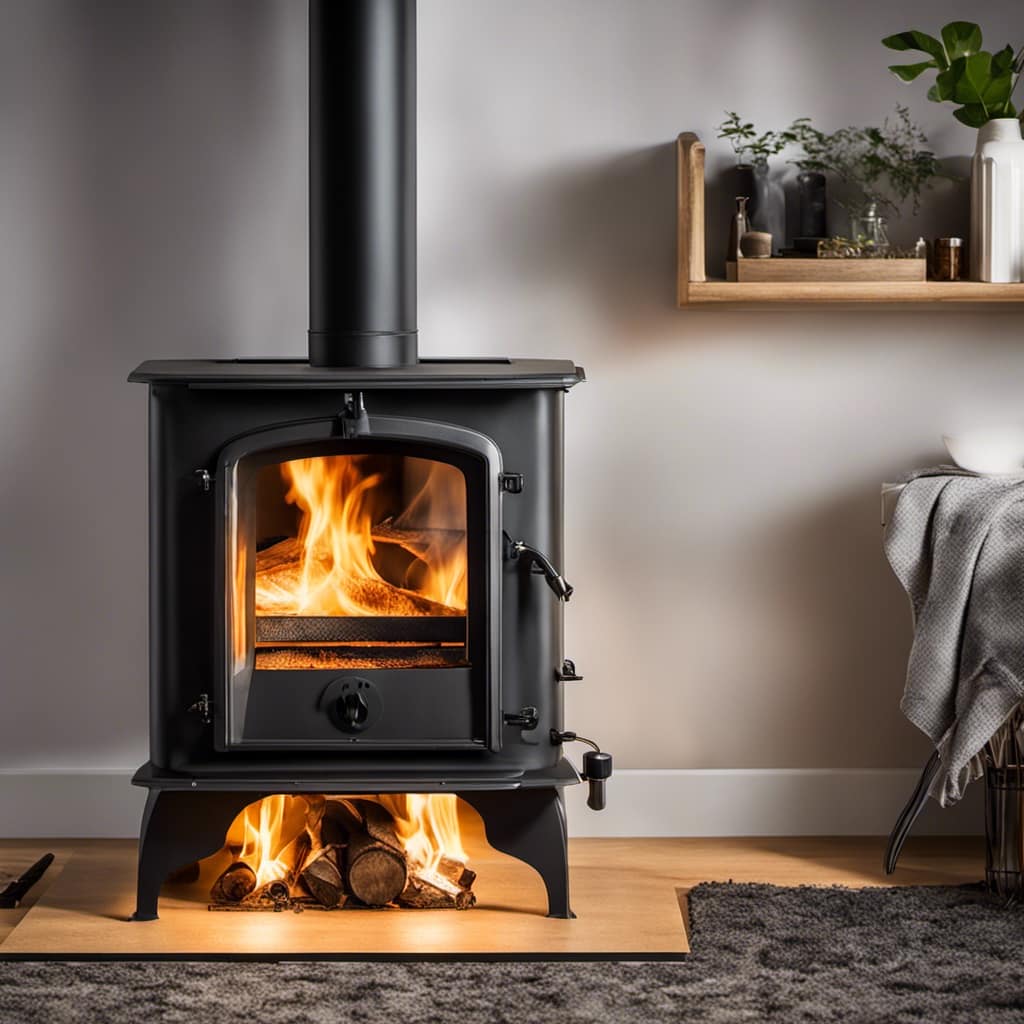
Installing the Wood Stove and Chimney Pipe
To ensure a proper installation, it’s important to follow the manufacturer’s instructions and guidelines for the wood stove and chimney pipe.
Before installing the wood stove, make sure the floor and surrounding area are properly protected. Position the stove on a non-combustible surface, such as a hearth pad, and secure it according to the manufacturer’s recommendations.
Next, connect the chimney pipe to the stove’s flue collar using the appropriate fittings. It’s crucial to ensure a tight and secure connection to prevent any leaks.
Once the chimney pipe is installed, it’s essential to install the chimney cap. The cap helps prevent rain, snow, debris, and animals from entering the chimney.
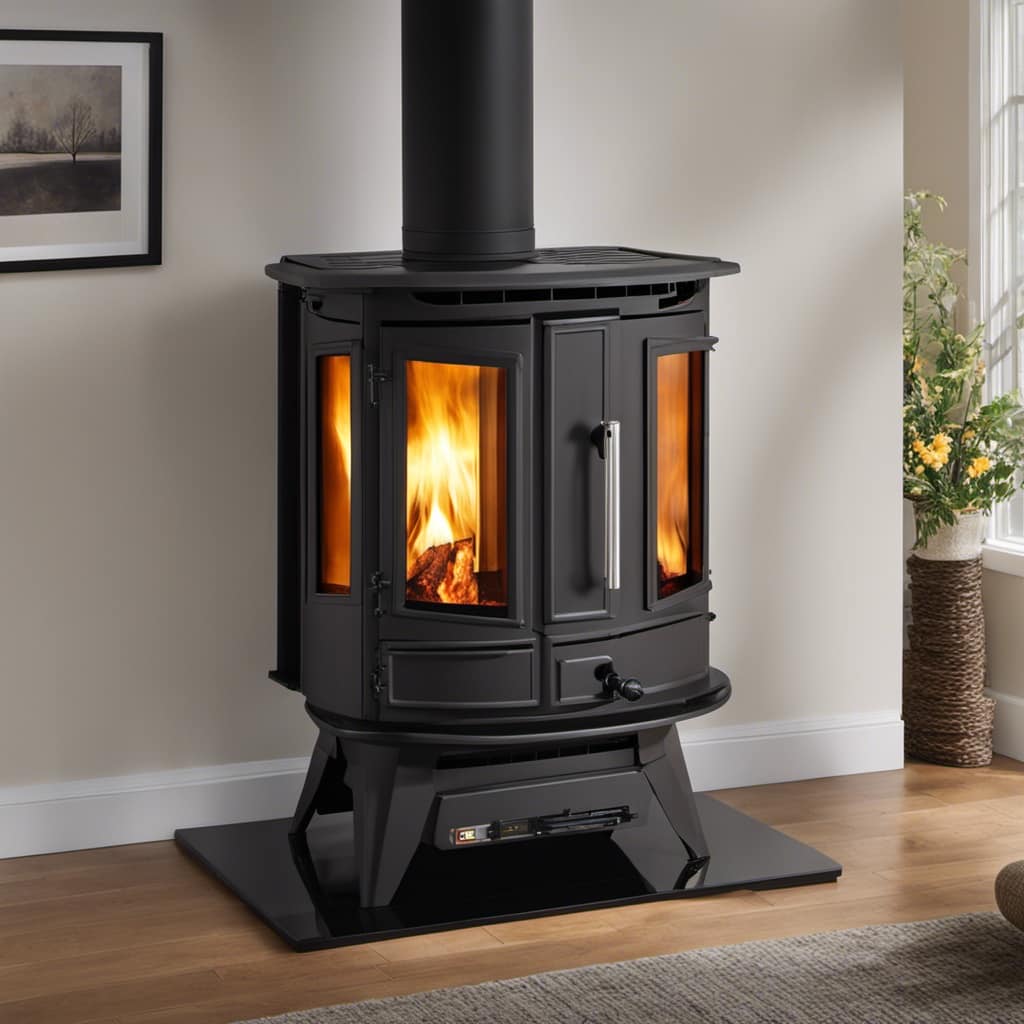
Regular maintenance of the wood stove is also important to ensure its efficient and safe operation. This includes cleaning the stove, inspecting the chimney regularly, and removing any creosote buildup.
Ensuring Proper Ventilation and Safety Measures
I must remember to regularly inspect and clean the chimney to ensure proper ventilation and maintain safety. Neglecting chimney maintenance can lead to a buildup of creosote, which is highly flammable and poses a serious fire hazard. Here are some common mistakes to avoid and maintenance tips to follow:
Common mistakes:
- Ignoring regular chimney inspections and cleanings
- Failing to remove debris and blockages from the chimney
- Neglecting to check for cracks or damage in the chimney liner
- Using improper fuels or burning materials in the wood stove
Maintenance tips:
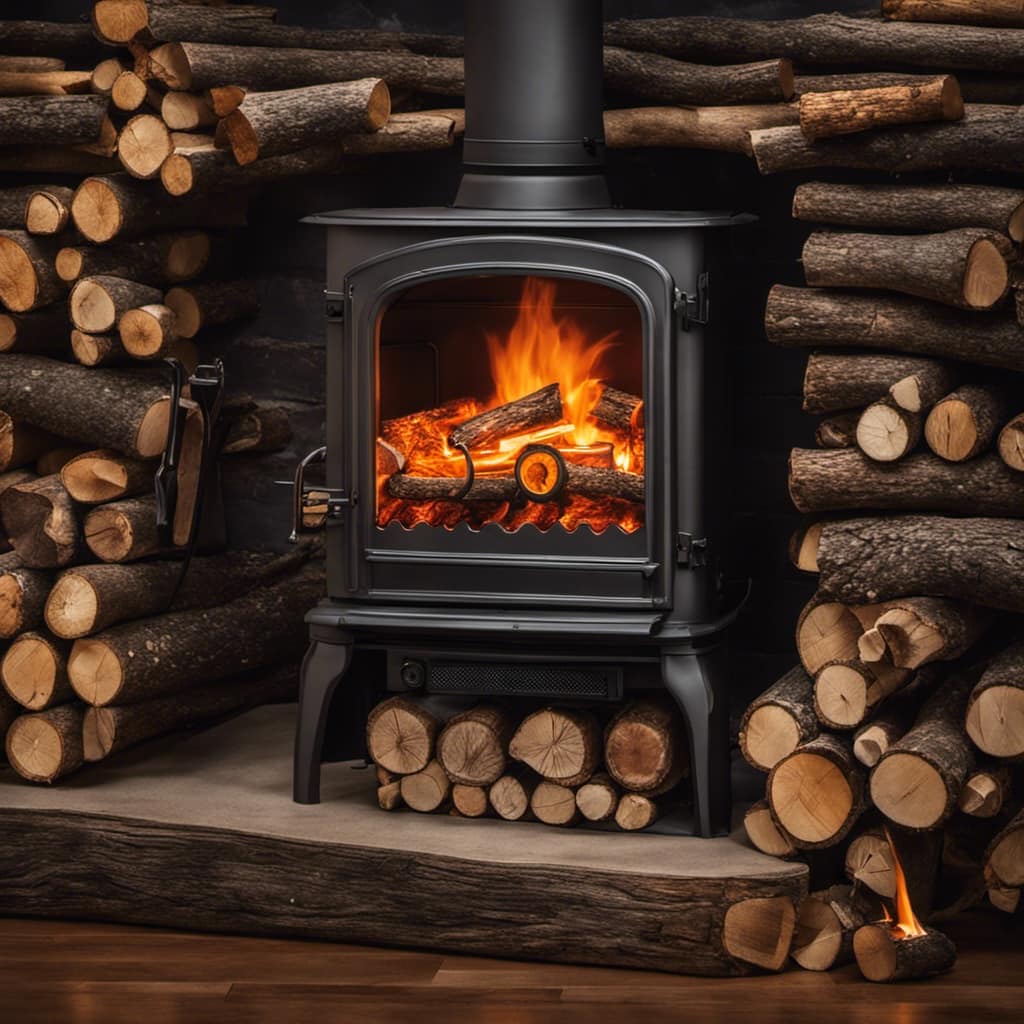
- Schedule annual chimney inspections by a professional
- Clean the chimney regularly, removing any creosote buildup
- Clear the chimney of any debris, such as leaves or bird nests
- Ensure proper ventilation by checking the damper and air vents
Frequently Asked Questions
What Are the Best Firewood Options for Burning in a Wood Stove?
The best firewood options for burning in a wood stove are hardwoods like oak, maple, and birch. They provide long-lasting and consistent heat. Properly stacking firewood in a dry and well-ventilated area is crucial for effective storage.
Can a Wood Stove Chimney Be Installed in a Mobile Home?
Can a wood stove chimney be installed in a mobile home? Yes, it is possible to install a wood stove chimney in a mobile home. However, there are certain pros and cons to consider before undertaking this installation.
How Often Should the Chimney Be Inspected and Cleaned?
I inspect and clean my wood stove chimney annually to ensure proper maintenance. It’s important to remove creosote buildup and check for any blockages or damage. Regular maintenance helps prevent chimney fires and ensures efficient operation.
Are There Any Specific Building Codes or Permits Required for Installing a Wood Stove Chimney?
Building code requirements and permits are crucial when installing a wood stove chimney. They ensure compliance with safety standards and local regulations. It’s important to research and obtain the necessary permits before starting the installation process.
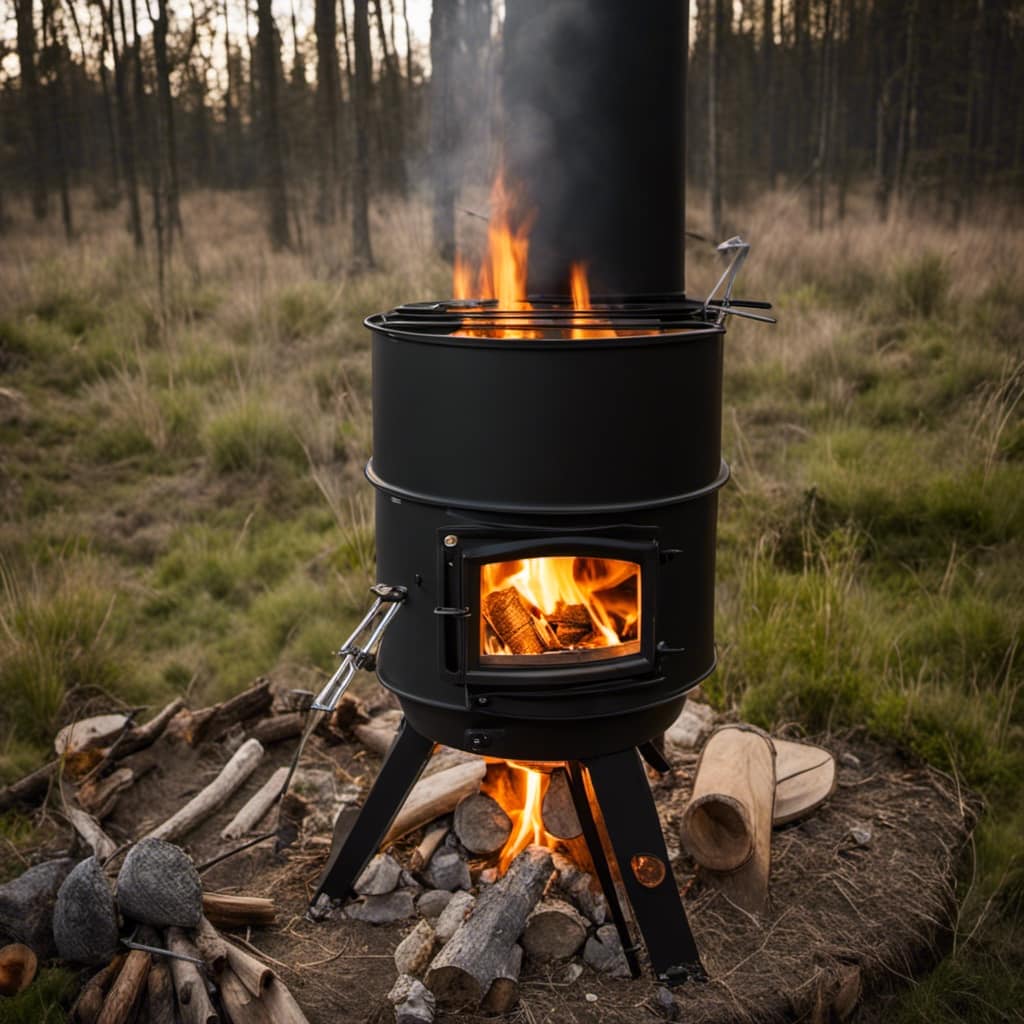
What Are the Signs of a Chimney Blockage or Malfunction That Homeowners Should Be Aware Of?
Regular chimney maintenance is vital to ensure the safety and efficiency of your wood stove. Signs of blockage or malfunction, such as smoke backing up into the house, can indicate the need for immediate attention.
Conclusion
In conclusion, installing a wood stove chimney requires careful planning and attention to detail.
It’s like building a sturdy bridge that connects the warmth of your home to the outside world.
By finding the right location, choosing the proper chimney type, and ensuring proper ventilation and safety measures, you can enjoy the cozy ambiance and efficient heating provided by your wood stove for years to come.
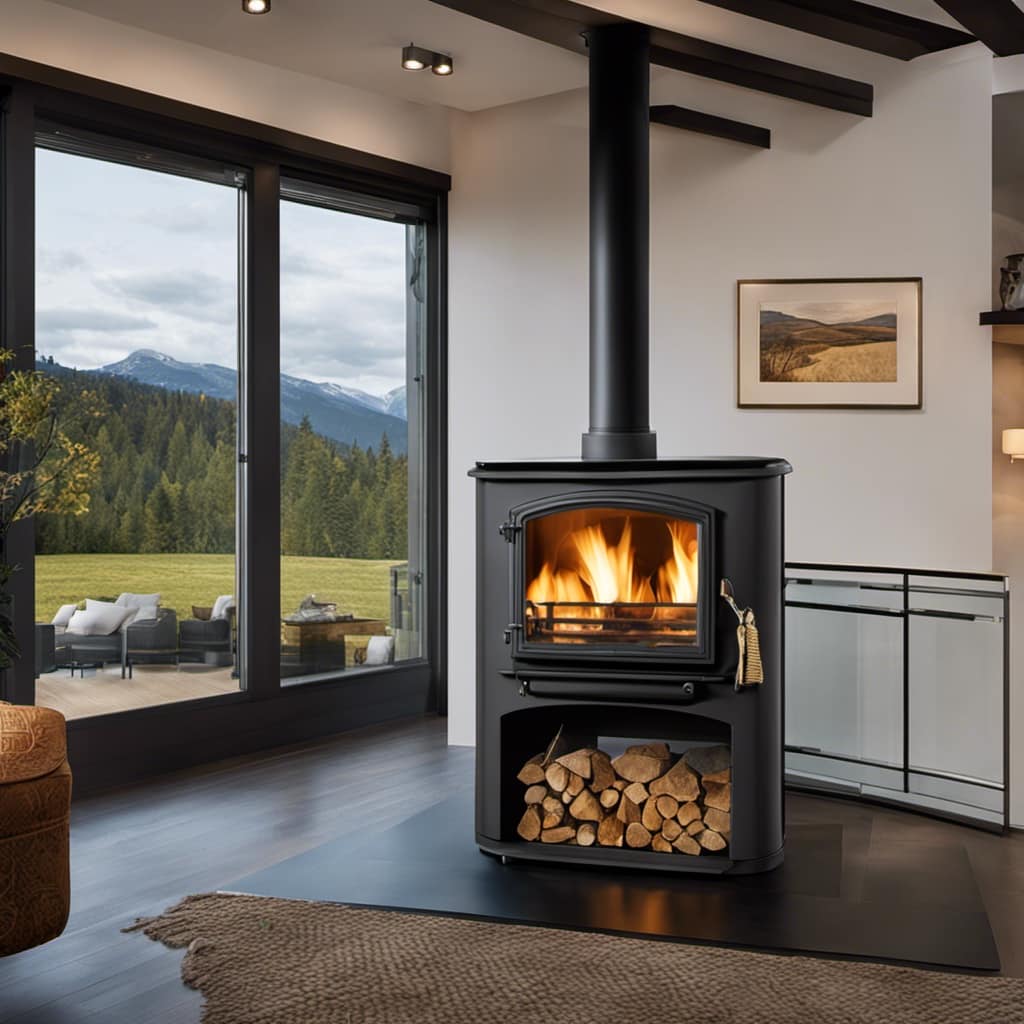
Growing up surrounded by the vast beauty of nature, Sierra was always drawn to the call of the wild. While others sought the comfort of the familiar, she ventured out, embracing the unpredictable and finding stories in the heartbeat of nature.
At the epicenter of every remarkable venture lies a dynamic team—a fusion of diverse talents, visions, and passions. The essence of Best Small Wood Stoves is crafted and refined by such a trio: Sierra, Logan, and Terra. Their collective expertise has transformed the platform into a leading authority on small wood stoves, radiating warmth and knowledge in equal measure.









